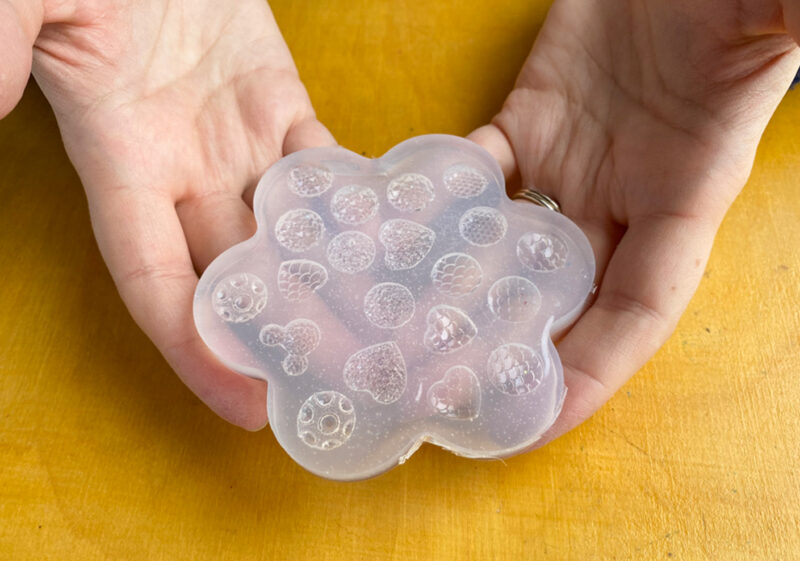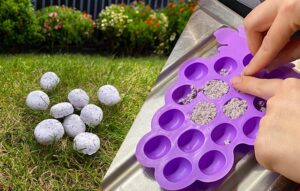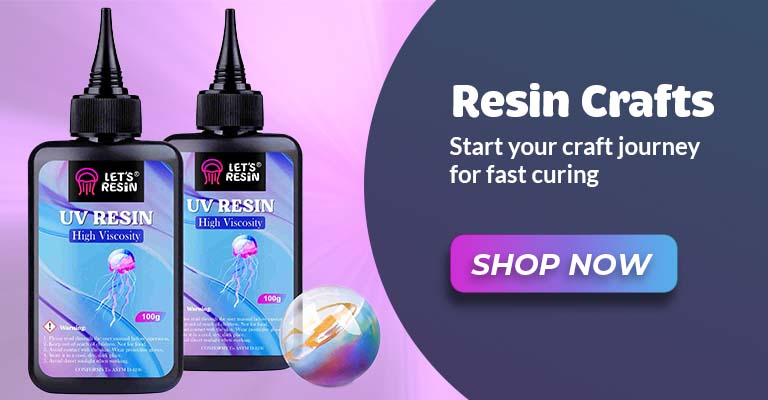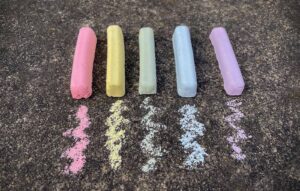When it comes to silicone mould making, the choice of material can make all the difference in the world. I love using liquid silicone rubber for making my moulds. It has versatile properties and is easy to use, revolutionising the art of mould making.
Let’s delve into the world of liquid silicone rubber, addressing the difference between silicone and liquid silicone, the best silicone for mould making, and finally, a step-by-step guide on how to create your own simple silicone mould.
Can You Use Liquid Silicone Rubber for Moulds?

Absolutely! Liquid rubber, specifically liquid silicone rubber, is an excellent choice for mould making.
Silicone rubber has lots of advantages over traditional mould-making materials, such as its ability to capture intricate details, flexibility, and durability.
Whether you’re a professional artist, a DIY enthusiast, or simply exploring your creativity, liquid silicone rubber provides a reliable solution for making high-quality moulds.
What’s the Difference Between Silicone and Liquid Silicone Rubber?
Silicone and liquid silicone are closely related materials, but they have distinct characteristics.
Silicone, in its solid form, is a rubber-like substance known for its heat resistance, durability, and flexibility.
On the other hand, liquid silicone refers to a two-component system that consists of a base and a curing agent.
This liquid form offers greater flowability and is specifically designed for mould making.
When the two components of liquid silicone are mixed together, a chemical reaction occurs, resulting in a cured, solid silicone mould.
The Best Silicone for Mould Making
When it comes to choosing the best silicone for mould making, there are several reputable brands that offer high-quality liquid silicone products with specific features to suit different moulding needs.
Let’s take a closer look at some popular liquid silicone brands and their features:
Smooth-On
Smooth-On is a well-known and respected brand in the moild-making industry. They offer a wide range of liquid silicone rubbers for different purposes. Let’s explore some of their silicone rubber products:
- Dragon Skin series: Dragon Skin silicone rubbers by Smooth-On are loved by artists and special effects professionals for their flexibility and strength. They can capture even the tiniest details, making them perfect for creating sculptures, masks, and prosthetics that look incredibly realistic.
- Mold Star series: Smooth-On’s Mold Star series is specially made for making molds. These silicone rubbers have a smooth texture and flow easily when mixed, making them effortless to use. They accurately replicate fine details, ensuring that your moulds retain their shape over time. You can use Mold Star silicone rubbers with various casting materials like resins, waxes, and gypsum.
- Sorta-Clear series: If you need transparent or tinted resin casting, Smooth-On’s Sorta-Clear series is a great option. These silicone rubbers are see-through, allowing you to easily check the filling and curing process of your molds. They are strong enough to capture intricate details and are often used for making jewellery, special effects creations, or prototypes where transparency or specific colors are important.
Smooth Cast
Smooth Cast, a brand by Smooth-On, specializes in casting materials and offers a range of liquid silicone rubbers specifically designed for mould making. Let’s take a closer look at what Smooth Cast has to offer:
- Smooth Cast 300 series is highly regarded for its exceptional precision in reproducing fine details. These liquid silicone rubbers cure to a Shore hardness of A30, striking a perfect balance between flexibility and durability. Mixing and pouring them into moulds is easy due to their smooth and consistent flow. The Smooth Cast 300 series is my go-to choice for projects that demand intricate detail reproduction and sturdy moulds, making it a popular choice among artists and craftsmen like myself.
- Smooth Cast 320 series from Smooth Cast shines. It is known for its enhanced flexibility, making it ideal for applications that require moulds with greater flex. With a Shore hardness of A20, these silicone rubbers provide a softer and more pliable finish. Despite the increased flexibility, I have found that the Smooth Cast 320 series retains excellent detail reproduction capabilities. This makes it perfect for creating moulds for props, masks, and other projects that require moulds with some degree of movement or flexibility.
One standout feature of Smooth Cast products is their minimal shrinkage during the curing process. This minimises the risk of distortion or warping in the final mould, allowing me to maintain the original dimensions and accurately replicate the model or object I’m working with.
In terms of compatibility, Smooth Cast silicone rubbers work well with a wide range of casting materials, including resins, waxes, gypsum, concrete, and more. This versatility empowers me, as an artist to explore various applications, from creating intricate sculptures to producing functional parts and prototypes.
Ecoflex
Let’s dive into the features and benefits of Ecoflex silicone rubbers, a brand by Smooth-On, known for their eco-friendly properties and exceptional performance in mould making:
- Ecoflex series : The Ecoflex series comprises platinum-cured silicone rubbers that deliver exceptional flexibility and tear resistance. These rubbers are designed to withstand repeated flexing, making them perfect for projects that demand highly flexible moulds. Whether it’s puppetry, animatronics, or wearable props, Ecoflex silicone rubbers ensure seamless movement and long-lasting moulds, even under constant stress.
- Ecoflex GEL series: The Ecoflex GEL series introduces a unique gel-like consistency. This enables the creation of moulds with a soft and squishy texture. This particular line of rubbers finds its application in special effects makeup, realistic prosthetics, and other projects that call for moulds with a lifelike and pliable feel. With the softness and elasticity of Ecoflex GEL silicone rubbers, intricate details can be casted with ease, providing users a comfortable and realistic experience.
Lets Resin
Let’s Resin has a range of user-friendly silicone products suitable for both beginners and experienced crafters. Their Silicone series provides low viscosity for easy mixing and capturing intricate details. The Translucent Silicone series allows visual monitoring during the mould-making process, while the Soft Silicone series creates moulds with a soft and flexible texture.
These silicone rubbers are known for their consistent quality. Their R PRO 10 offers a low viscosity for easy pouring and accurate detail reproduction. R PRO 20 provides good tear resistance and high stability, whilst R PRO 30 is designed for more demanding projects with enhanced mechanical properties.
Liquid Silicone Rubber
Before making a selection, consider the specific requirements of your project, such as the level of detail needed, the mould’s flexibility requirements, and the desired curing time.
It’s also a good idea to consult the manufacturer’s guidelines and instructions to ensure compatibility with your intended application.
Remember, the best silicone for mould making ultimately depends on your specific project needs and preferences.
Take the time to research and experiment with different brands and types of liquid silicone to find the one that suits your artistic vision and technical requirements.
How to Make a Silicone Mould?

Creating a silicone mould is a straightforward process that can be accomplished with a few simple steps.
Here’s my guide to making your own silicone mould.
Bubble free liquid silicone rubber
When working with liquid silicone rubber bubbles can be a real problem. They not only affect the appearance of the finished product, but can also weaken the overall structure.
Bubbles can appear in silicone rubber for a variety of reasons. If the silicone is not properly mixed or if it is exposed to air during curing, bubbles do appear.
Fortunately, there are a few simple techniques that can help you remove bubbles from silicone rubber.
Prevention is key when it comes to achieving a bubble-free silicone mould.
Proper mixing, degassing, and careful pouring techniques will significantly reduce the likelihood of bubbles forming in your silicone rubber.








